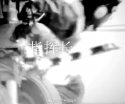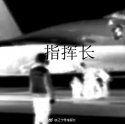I disagree.
The direction of forces and the location of the forces acting on the plane for a STOBAR aircraft I think would be different to a CATOBAR aircraft.
For a STOBAR aircraft, the bulk of the stress on the airframe is from the landing/recovery phase, where the aircraft must have the landing gear and structural reinforcement to tolerate the "crash landing" impact and "vertical stress" of touch down, as well as the structural reinforcement on the rear side of the aircraft where the tailhook catches the wire and to slow the aircraft to a stop which will cause sagittal (anterior/posterior) stress. There is very minimal structural reinforcement for the ski jump take off, I imagine, if any.
For a CATOBAR aircraft, it must also be reinforced in a similar if not identical manner to a STOBAR aircraft for the landing/recovery phase, but it must also have additional forward reinforcement to withstand the sagittal stress of catapult launch, which naturally acts around the nosegear, the nose and largely the front of the aircraft, which is in a different location to the sagittal stress of the rear of the aircraft for landing.
So IMO, the idea that a STOBAR compatible aircraft needs only the same structural reinforcement as a CATOBAR aircraft, is unlikely. I think a CATOBAR aircraft will be very able to naturally operate from a STOBAR aircraft carrier, but a STOBAR aircraft will be unable to operate from a CATOBAR carrier.
The stresses especially on the front landing gear and the forward fuselage of a CATOBAR fighter are definitely not the same as the stresses on that of a STOBAR fighter, so there is no reason believe that a STOBAR fighter is "CATOBAR-ready". A STOBAR fighter does not need the extra reinforcement to survive massive, sudden and repeated accelerative force passed through the struts of the front landing gear into the forward part of the fuselage, so there is no need to reinforce any of those areas. I don't know much about fighter design, but I do know that designers work to shave every last kg off the design that they can, so I seriously doubt a STOBAR fighter and a CATOBAR fighter are the "same and one" design.
That's the thing though -- I think the forces exerted on the airframe's structure probably are not within the limits of the design for both kinds of operations.
In my opinion there is no basis to suggest that the structural reinforcement of a STOBAR compatible fighter is the same as what is necessary for CATOBAR operations.
There is no STOBAR stress that is equivalent to the anterior/posterior stress that the catapult launch exerts on the airframe for a CATOBAR aircraft, and that is one of the key differences in terms of the stresses that a STOBAR airframe and a CATOBAR airframe have to survive.
In my opinion there is no basis to suggest that the structural reinforcement of a STOBAR compatible fighter is the same as what is necessary for CATOBAR operations.
The way I see it is that the stress forces from the tail hook will have be transmitted to the rest of the plane to slow it down to a stop. For this reason, re enforcement of the structure of the aircraft will have to be done longitudinally along the length of the aircraft from the tail-hook to at least until the front landing gear, to transmit the braking force to the rest of the aircraft.
Re-enforcing the structure around the tail-hook of the aircraft purportedly just for aircraft recovery won't do as the stress forces will be transmitted to the rest of the aircraft and possibly breaking the aircraft apart at the mid section.
That is why, to begin with even for STOBAR, re enforcement of the aircraft structure would already have to be done along the whole length of the aircraft (to wind-stand the stress of repeated aircraft recovery) and this, in my opinion, coincide with the requirement of catapult launching.
Bear in mind the extreme stress during the recovery of the STOBAR aircraft, which has to come to a complete stop in secs. The stress on the aircraft during recovery is even greater than that during a catapult launch, so this would even exceed the limits of the latter.
For this reason, the same re enforced structure would be more than strong enough to transmit the pulling force to the whole of the aircraft during a catapult launch. Imo, the pulling force on the front wheel could be transmitted to the strongest part of the structure possibly around the area where the tail-hook is attached with the use of additional re enforcing structures/rods/bars.
Imo, solving the 2 problems in one go saves a lot time and provides the opportunity to come with the best solution for an aircraft that can do both STOBAR and CATOBAR.


